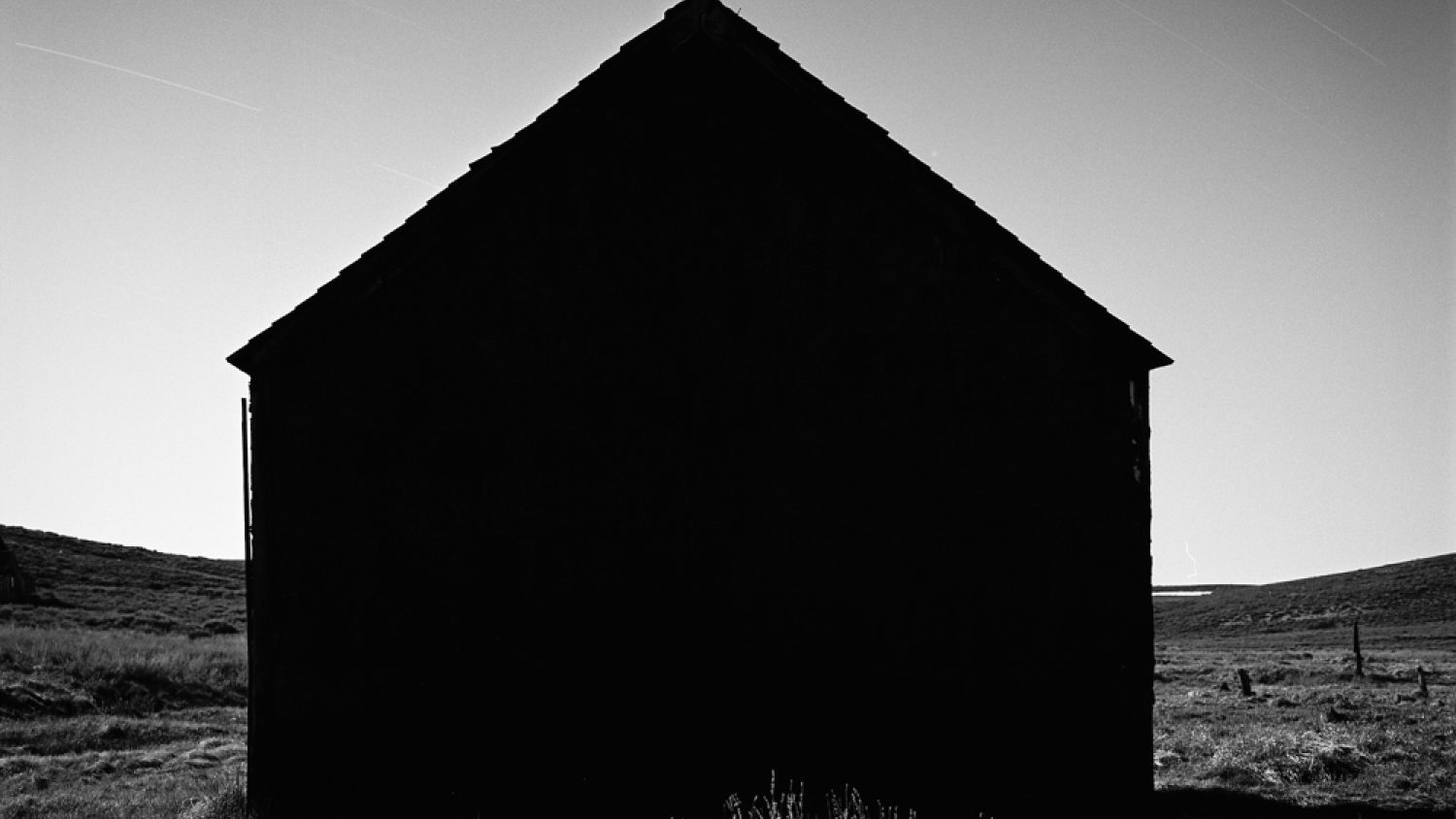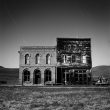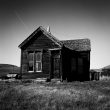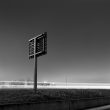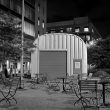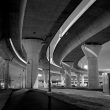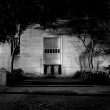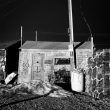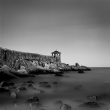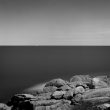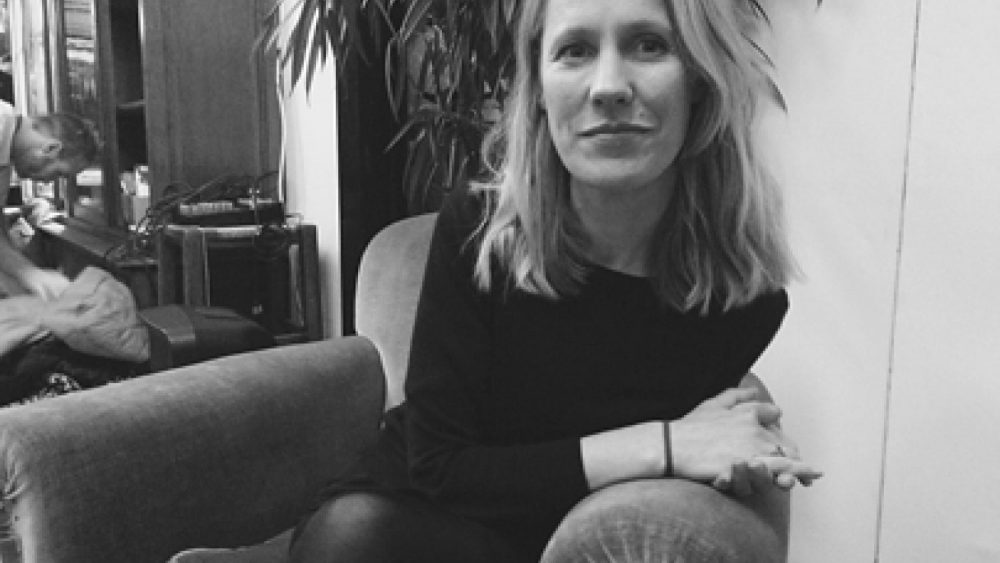Nora Vrubļevska
Nora Vrubļevska (1985) is a photographer born in Riga. She has studied French philology at the Latvian Academy of Culture and has lived more than six years in the USA. In America Nora started taking photographs at night, creating several series – Cambridge at Night and Rockport at Night about two cities in Massachusetts, as well as Bodie Ghost Town about one of the American ghost towns in California, which has not been inhabited since the 1940s. The Bodie town located within a nature protection park is a famous place among photographers. Last year Nora Vrubļevska together with photographer Dan Squires published a book about Cambridge at Night, which can be purchased at Nora’s website. Vrubļevska has also given lectures on night photography in Boston. Alongside with night photographs, which she takes both with an analogue and digital equipment, Vrubļevska also creates cyanotype photograms, which need paper, chemistry, a frame and plants.
Why are you drawn to photographing at night?
I am drawn to it, because at night the hustle of the day has calmed down and the streets, which are full of people and heavy traffic during the day, are empty, quiet and lonely. And, of course, there is no bright sunlight and everything looks different. Sometimes it’s even more beautiful. But it cannot be noticed, if you don’t take a break and look around. The sources of light at night shed light only to some buildings and surfaces, and a lot of things are hidden. Therefore, a photograph taken during daytime will never look as mysterious as the one taken during night-time. Due to the restricted amount of light, I usually use long exposures. Depending on the location and light, it can be from 15 seconds to 60 minutes. Stars can be seen better outside the city. Light pollution is a serious problem. If in Riga only a few stars can be seen in a clear sky, in the countryside there seem to be billions of stars. When taking photos outdoors, I feel closer to nature and the Universe. A photographed way of stars is always a wonder and a proof that the basic principles of astronomy really work. A full moon night experienced outdoors looking for the right shot or drawing with a lantern is the best meditation in the world. The long exposures allow picturing surreal sights that are left unnoticed during the day.
Have you had situations when someone has called police, because you have been standing in front of a house that’s not your own for 30 minutes?
Although I have never been arrested, there are many funny and a little scary stories. There have been occasions, when it’s better to take the tripod, bags and to leave the place. Once a stranger asked, whether I could paint his van, because all artists must know how to paint. On other occasions security guards have told me to leave their territory, warned about the skunks wandering nearby or started a friendly chat in the midnight darkness. It must be noted though that night photographers have a lot of stories about bossy security guards and police.
Tell us, how you found your way to the USA.
I went to America in 2007 to accompany my husband Artūrs, in order he could study physics at a postgraduate level in the Institute of Technologies in Massachusetts. We lived in Cambridge, which is one of the suburbs of Boston inhabited by 4.6 million people. Cambridge is on the other side of the River Charles, similarly as Ķīpsala – on the other side of the Daugava if we look from the centre of Riga. I used an opportunity to study at the New England School of Photography, where I got acquainted with excellent scholars. In 2011 I became a teacher’s assistant at the night photography master workshop of Lance Keimig. Afterwards I worked there as a lecturer. I have worked as a photo reporter for a student newspaper, made posters for MIT cinema, as well as worked on various commissions. Additionally, I also attended a couple of master workshops at the School of the Museum of Fine Arts Boston and the Photographic Resource Center. I also participated in group and solo shows. Two months ago we returned to Riga, because Artūrs was offered a teaching and research post at the Riga Technical University. Currently I work as a voluntary at the Latvian Museum of Photography and I work on a project, which will offer master workshops of alternative processes for kids and young people. In future I’m planning to organise creative workshops for children and to work on my own projects.
How did you manage to publish a book?
I published the book together with my friend and photographer Dan Squires. From the very beginning I knew that I would like to publish the project Cambridge at Night as a book. We were thinking for one and a half years, we selected the images and decided upon their sequence, we worked on the design and made the sample book. Then we showed the demo book to others, listened to reviews, etc. The introduction was written by my mentor Lance Keimig. We found a company that could print the book in high quality and for a moderate price, paid and ordered 50 copies. I have always liked photo books. I would be very keen to collect photographs, but because originals are pricey, I buy a book. Thus, I feel that I have supported the artist – the author of the book – and I also own a series of photos, which I can revisit over and over again, when the exhibitions have ended. Besides, I can share them with my friends.
What project are you working on now?
Currently I work on a project on abandoned properties in Riga. In general I’m very interested in everything that is related to ecological way of life and with the spring approaching I am thinking about a project on ecological country farming and homesteading.
